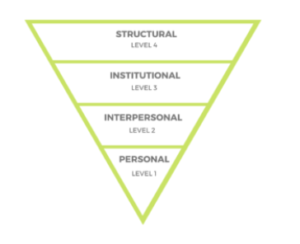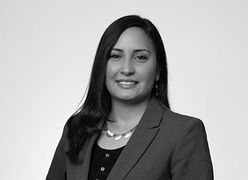
How To Become An Inclusive Organisation
During my early professional career as a manager in a Fortune 500 company, I remember the day I was promoted to regional district manager. This meant I would manage 2 offices in the region. I was excited and ready to take on the responsibility. I convened a town hall of all the managers in the region for a meet and greet and expectations meeting. The district had a community that was about 75% Hispanic, so I expected several bilingual Hispanic managers. To my surprise, there was only one bilingual manager and two staff members who identified as Hispanic. I decided to meet with all the managers to get to know them and ask them what they liked about working in the district and what they thought could be improved. Everyone had various items they discussed, but when It came to the one manager who identified as a person of colour, she expressed that she was thinking about resigning from her position. She stated that she felt many of the staff and leadership did not respect her. So during my usual check-in at the office, I probed with the staff and some stated that her family came to visit often, she spoke too fast and loud, and they felt uncomfortable when she spoke to her Spanish-speaking clients in Spanish. I discovered this was a classic case of an organisation lacking internal cultural competence. Inside the organization, leadership and staff needed training because they were driving away their best employees. It was a process, but over some time of incorporating Diversity, Equity & Inclusion (DE&I) into the regular leadership training, the organisation became more inclusive. So now it was time to work on the external factors of DE&I for the organisation.
I saw a missed opportunity in the Hispanic community, so I recruited several bilingual Hispanic managers and staff members. The next season, new client sales increased by 30%, mostly Spanish-speaking new clients. I still receive periodic updates from the manager who wanted to leave the organisation. She is now a regional district manager and has recruited many other individuals into the organisation. This was a proud moment for me. I love hearing how she has flourished in her career and how the organisation is growing its clientele as well as increasing its diverse staff.
Many times, I receive calls and urgent emails from organisations asking for support with DE&I. They are usually looking to hire more diverse candidates or appeal to a more diverse clientele. I first tell them that they need to get their house in order and ensure everyone feels included and that they belong in the organisation. Then they can move on to the higher levels of structural and systemic issues. I have been helping organisations implement (DE&I) practices for the past 7 years. Driving organisational change can never be accomplished in a one-time training. Below are 4 levels to becoming an inclusive organisation and some best practices, resources and case studies that I utilise in my DE&I work: level 1- Personal, level 2- Interpersonal, level 3- institutional, and level 4- Structural.

Level 1 | PERSONAL: Are your people aware of their personal cultural bias?
This level is the foundation for diversity, equity, and inclusiveness (DE&I). Individuals should understand their own identity, power, and privilege, and how they affect their work, relationships, and impact. Lastly, they should believe in the potential of other individuals to grow and develop in DE&I.
Knowledge. The sources of systematic and institutional inequities and the basic terminology and concepts of diversity, equity, inclusiveness, and justice are important to understand. A historical foundation grounds us in the present.
- Action Item: Simply reading about the history of power and oppression in the work setting will help with a historical lens. I find that excerpts from the book written by Paul Kivel, “Uprooting Racism”, provide an accurate historical lens into these topics. You can also take the Implicit Bias test as a starting point for your DE&I journey.
Self-Awareness. Understanding one’s own identity, power, privilege, and access, and how they affect one’s work and relationships creates critical consciousness. Having a clear sense of one’s unique value, potential impact and limitations is essential for understanding the value of cultures different from one’s own. Multicultural competence is the ability to differentiate your own culture from others and to accept differences without judgment.
- Action Item: Read DiAngelo’s work on white fragility for a deeper understanding of power and privilege.
Learning/Continuous Exploration. Organisations promote the potential of their individuals to grow and develop in inclusive leadership by promoting continuous learning and exploration. If the tools and resources are present in an organisation, and leadership encourages growth in diversity, equity and inclusiveness, then individuals will take ownership of their growth in the organisation and personally.
- Action Item: Have resources available for employees in your newsletter and promote these resources internally and externally. This will build psychological safety in your organisation and diverse talent. The Circle Way is one such tool to facilitate group exploration, and Layla F. Saad’s book “Me and White Supremacy” is a guide to self-awareness exploration.
Level 2 | INTERPERSONAL: Are our personal relationships equitable?
Once an individual has the foundational knowledge and history of DE&I, then it is time to work on how they are relating and communicating in their relationships.
Relating. Relating means building trustful, meaningful relationships across levels and groups and adapting to work collaboratively with all teammates. This is especially important for inclusive leadership. Leaders should build authentic manager-report relationships with all direct reports and listen to different experiences in the workplace.
- Action Item: We are all so busy at work that we don’t stop and listen sometimes. Having Friday coffee with the leaders in the lobby or lounge area at work can provide a space where the team can relax for an hour and talk about anything other than work. This builds relationships and may even clear up misunderstandings in communication and acknowledge patterns of privilege.
Communicating. Communication is at the forefront of an inclusive culture. Through identity work, leaders should have a good grasp on their triggers and effectively manage their triggers to engage productively in dialogue through race and class discourse or simply to address any conflict. Engaging in conflict productively, without avoiding or prematurely shutting down the interaction builds trust and illustrates that all voices are heard.
- Action Item: Listening to others’ experiences helps to mitigate microaggressions in the workplace. Simply having a conversation about what surprised or resonated with the individual about the list of microaggressions and common patterns of privilege and oppression can spark great conversation.
Level 3 | INSTITUTIONAL: Are institutional policies and norms within your organisation equitable?
The third level recognises that cultural bias and oppressive assumptions become embedded in the policies and procedures of an organisation.
Acting on Equity. Includes identifying cultural breaches and taking active steps with appropriate urgency to address the challenge. Leadership should be able to identify inequities in their team and systems and take action steps to drive positive change at an institutional and systemic level. Communication and transparency are especially important when working for equity in the processes and systems of an organisation.
- Action Step: Creating leadership and decision-making structures that invest and give a voice and power to marginalized groups and ensure budget, talent and management systems and all policies further inclusiveness. Take a look at the equity lens decision-making tool that Multnomah County utilises to drive equity in its decision-making process to avoid cultural bias an “unnatural” process of reflection can drive better decision-making.
Valuing and Staffing for Diversity. Organisations value diversity by being open to different ways of being and thinking, and by understanding that this change can achieve better outcomes and results. Maintaining curiosity about others’ perspectives, experiences, and motivations will endorse a culture of diversity. The organisation and hiring managers should actively seek out and hire a diverse staff at all levels. Although women in senior positions are increasing, there is still a lag in marginalised individuals assuming higher-level positions.
- Action step: A full policy and procedure audit can hold leadership accountable for inclusive policies that affect all staff. The more inclusive the system and rules, the more feeling of belonging.
Leveraging Diversity. Leadership should actively seek out and ensure multiple voices are heard on key issues, particularly marginalised voices of the communities we partner with or serve. Lifting all voices either in a board room where a decision is being made or providing a space where everyone can add input or suggestions is a simple step towards leveraging diversity.
- Action step: Check out this Harvard Business Review article for more information on action steps to ending systemic and structural racism.
Level 4 | STRUCTURAL: Does your organisational structure promote diversity, equity, inclusion, and justice?
Acting for Inclusiveness. Distinguishing cultural differences and differing work styles from true performance challenges will help leaders seek out and leverage skills, traits and characteristics that may be unrecognised or undervalued in the dominant culture. This is where cultural competence comes into play. Seek articles on culture or resources to help you understand different cultures and experiences.
- Action step: This clip of Teach Us All illustrates an organisation living true to the core values of DE&I.
Leadership commitment. One of our favourite sayings here at Steople is that “leaders bring the weather”. Culture is set and modelled by the leaders at the top. Thus, leadership commitment is essential, so it trickles down to the staff level.
Case Study #1: Teach For America lives out the core values of diversity, equity and inclusiveness in everyday life as well as at the structural level. They implement inclusive leadership identity development from senior leaders to incoming corps members. TFA conducts quarterly power analysis and equity tools at the leadership level, and performs communication audits even at the board level.
Case Study #2: Johnson & Johnson is an organisation that values DE&I initiatives and incorporates this work into daily activities for the employees and leadership. DE&I is at the forefront of every training, coaching, and meeting.
Tracking and implementing these 4 themes in your organisation will ensure an inclusive organisation. But remember, leaders in the organisation should endorse and model these themes for inclusiveness to resonate throughout the organisation. Diversity, equity, and inclusiveness should be at the forefront of decision-making and conversations. Organisations may want to move fast on DE&I initiatives, but changing corporate culture is not an overnight fix. It is a process and a habit that takes time to flourish. Working on an inclusive leadership identity at the top will in turn trickle down to the staff level, then the organisation can work on the institutional and structural implementation of filling the pipeline with diverse talent and filter DE&I as a norm in the organisational culture.

